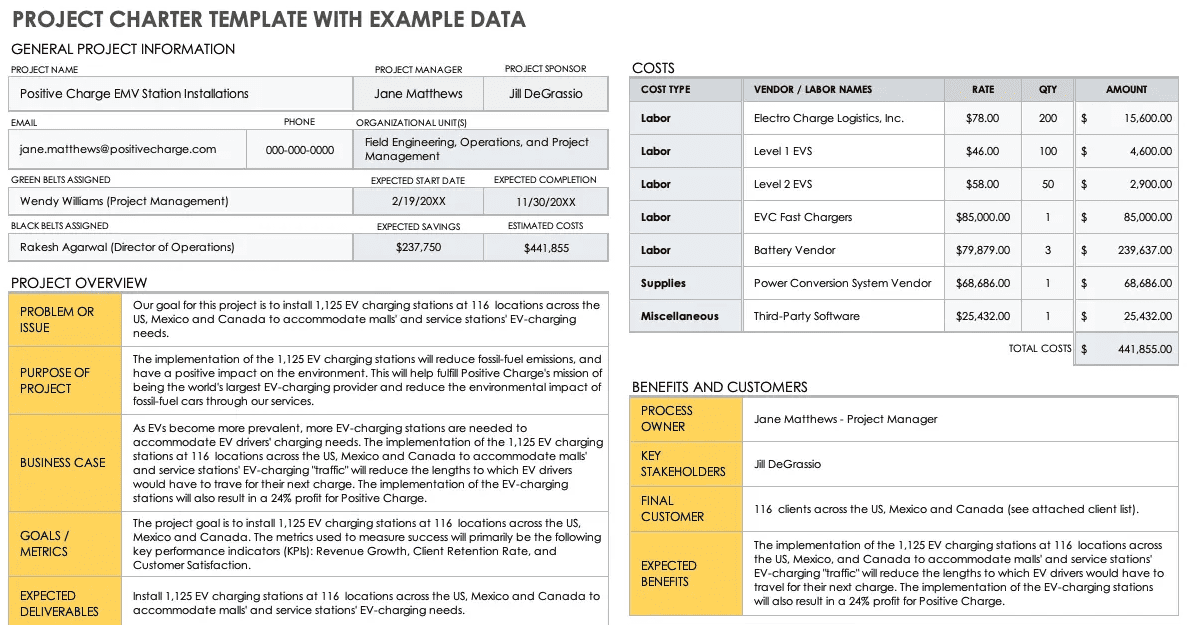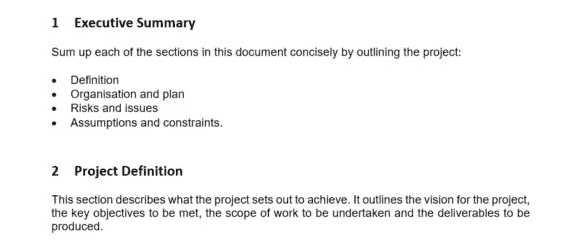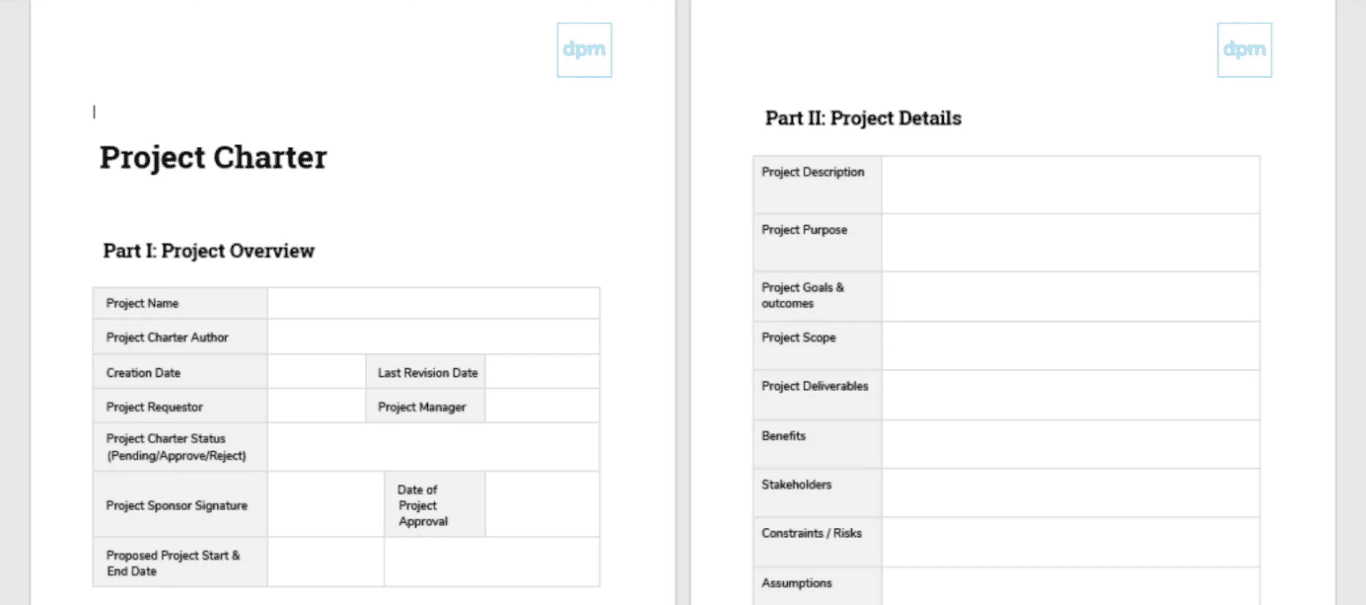What Is a Project Charter? (And 6 Templates)
You’ve probably been there—staring down a new project, wondering where to kick things off. It’s exhilarating, right? But also a little daunting. As a project manager, you know that every successful project starts not with a bang, but with a blueprint. Enter the project charter.
Below, you’ll get a detailed look at what a project charter is, what it should include, and how you can create one. Plus, you’ll get some handy project charter templates to help you hit the ground running.
What is a project charter?
A project charter is a fundamental document that brings your new project to life. It codifies the scope of your project and its objectives, as well as the participants who will carry it to the finish line. Not only does a project charter help to sell your idea to stakeholders by highlighting potential returns, but it also serves as a constant companion throughout the project lifecycle and ensures you’re collaborating effectively. It’s your first line of defense against scope creep, budget overruns, and crossed wires with stakeholders. It’s the rock that you can cling to amid the swirling sea of project tasks, changes, and challenges.
Let’s dig into what you should be including in your next project charter.
What should be in a project charter?
With its crucial role in the planning and execution of any project, a project charter serves as a compass guiding your project toward success. But what exactly goes into drafting this important document? Let’s take a look at the core components of a project charter:
- Project information: Include the project’s name, a brief description, and key personnel involved (sponsor, manager, team members, and stakeholders).
- Goals and objectives: Distinguish between high-level benefits (goals) and the more granular milestones you’ll need to achieve them (objectives).
- Roles and responsibilities: Clearly define each team member’s role and responsibility, and identify main stakeholders.
- Business case: Present the reasons for the project, including the business needs it fulfills and expected financial benefits.
- Budget: Provide a budget that details the estimated cost of the project, spending authority, and budget adjustment protocols.
- Scope: Identify the in-scope and out-of-scope items, highlighting key deliverables and milestones.
- Timeline: Provide a simplified version of your project schedule showing key milestones and project stages.
- Key assumptions and constraints: Note any assumptions or constraints that may impact your project’s execution.
- Risks: Highlight the most probable or impactful risks that could arise during the project.
- Requirements and success criteria: Define your project’s success criteria, considering aspects like time, cost, scope, risk tolerance levels, and quality standards.
How to create a project charter
By now you know what a project charter is and what its key components are. But are you still wondering how to actually create one? Here’s the full process broken down into four manageable steps.
Step 1: Setting project goals
At the heart of your project are its goals and objectives. What exactly are you trying to achieve with this project? Begin by clearly defining the high-level benefits the project should generate (your goals) and the concrete milestones or steps needed to achieve them (your objectives). It’s crucial that your project charter captures this understanding in a concise and articulate manner. This initial step sets the direction for your project and provides a clear target for your team to aim at.
Step 2: Organizing your project
Next, you need to outline the organizational structure of the project. This involves identifying the project’s key players, including the project sponsor, project manager, team members, and stakeholders. Clearly define the roles and responsibilities of each team member to eliminate ambiguity and foster accountability. This information is a keystone of your project charter, as it will serve as a reference point for responsibilities and decision-making authority throughout the project’s lifecycle.
Step 3: Creating a plan
Once you understand the goals of the project and how it’s going to be organized, it’s time to plan. You’ll need to sketch out the primary milestones and dependencies for everyone involved. You’ll also need to build out a timeline to ensure that both your team and stakeholders are aligned on when deliverables are expected to be completed. This implementation plan will serve as a guide for the project’s execution and aid the project team in staying focused, accountable, and efficient.
Step 4: Listing potential problems
Every project comes with its share of potential pitfalls. Take the time to anticipate and document potential issues in your project charter. Identify all possible risks that could arise in the project, emphasizing the most probable or impactful ones, and then create backup plans in order to mitigate those risks. Proactivity is key here. Note any assumptions or constraints that may impact the project’s execution. All of this will help to keep your project on course and destined for success.
Helpful project charter templates
We understand that starting from scratch can be intimidating, especially if you’re not yet an expert in every aspect of drafting project charters. That’s why it can be helpful to use project charter templates to get you pointed in the right direction.
Smartsheet project charter templates

Smartsheet has you covered with not one, but six project charter templates, including ones geared toward Six Sigma, Agile, and more.
Project charter template from ProjectManager

This free template from ProjectManager is simple, editable in Word, and covers the necessary bases to get you off the ground running.
Project charter template from The Digital Project Manager

The Digital Project Manager‘s template is straightforward and easy to edit in Word. They also include examples of different formats of project charters, highlighting how yours may adapt depending on what type of project you’re working on.
Chartering a course to success
Think of your project charter as your North Star, illuminating the path to successful project completion. By establishing a clear direction, defining roles and responsibilities, outlining a tangible plan, and identifying potential risks, your project charter sets the stage for efficient and effective project execution. Remember, it’s not about predicting every detail, but about setting a strong foundation for your project’s journey. With a robust project charter in hand, you’ll be ready to handle whatever obstacles may be thrown your way throughout the course of the project.


